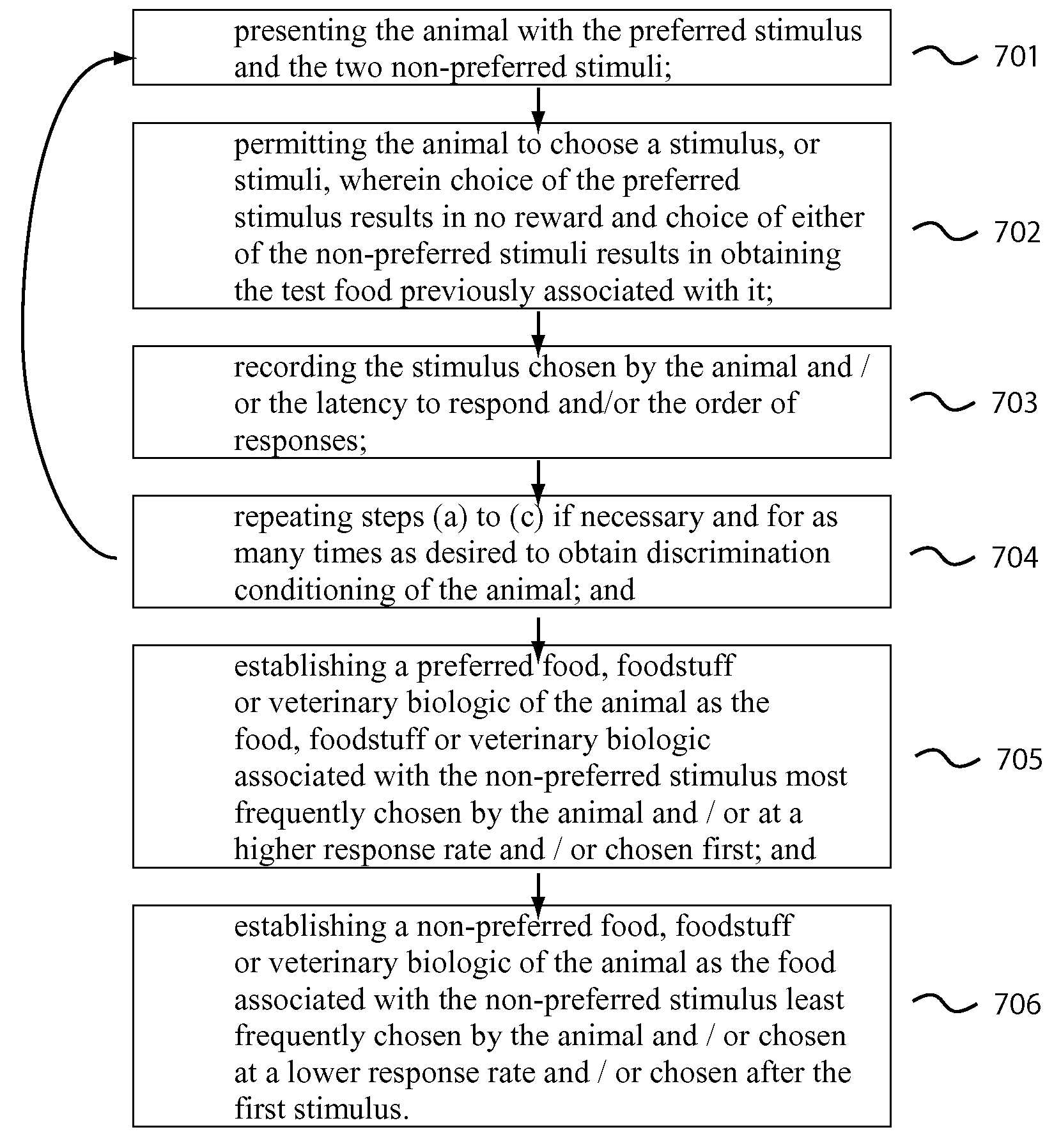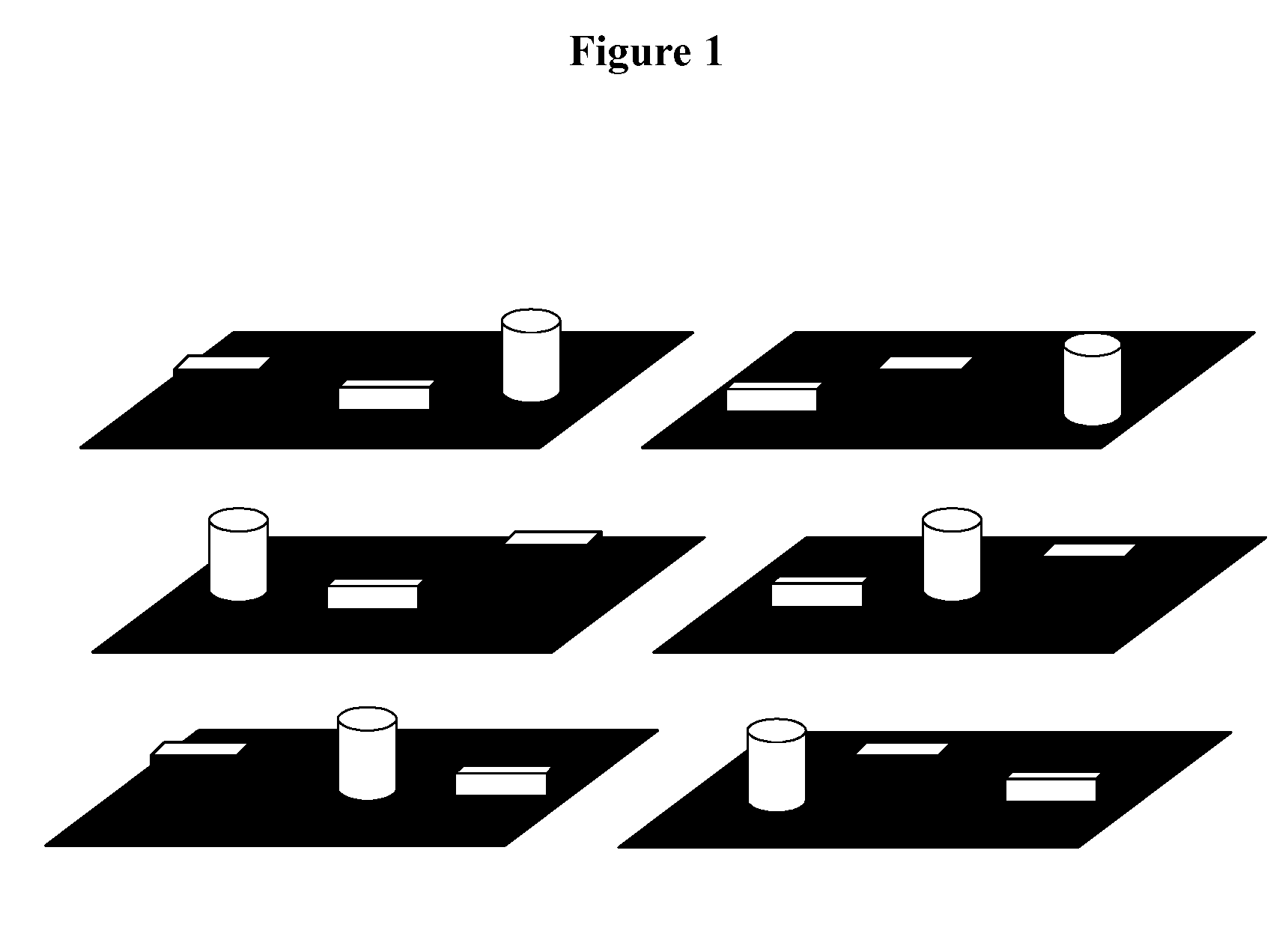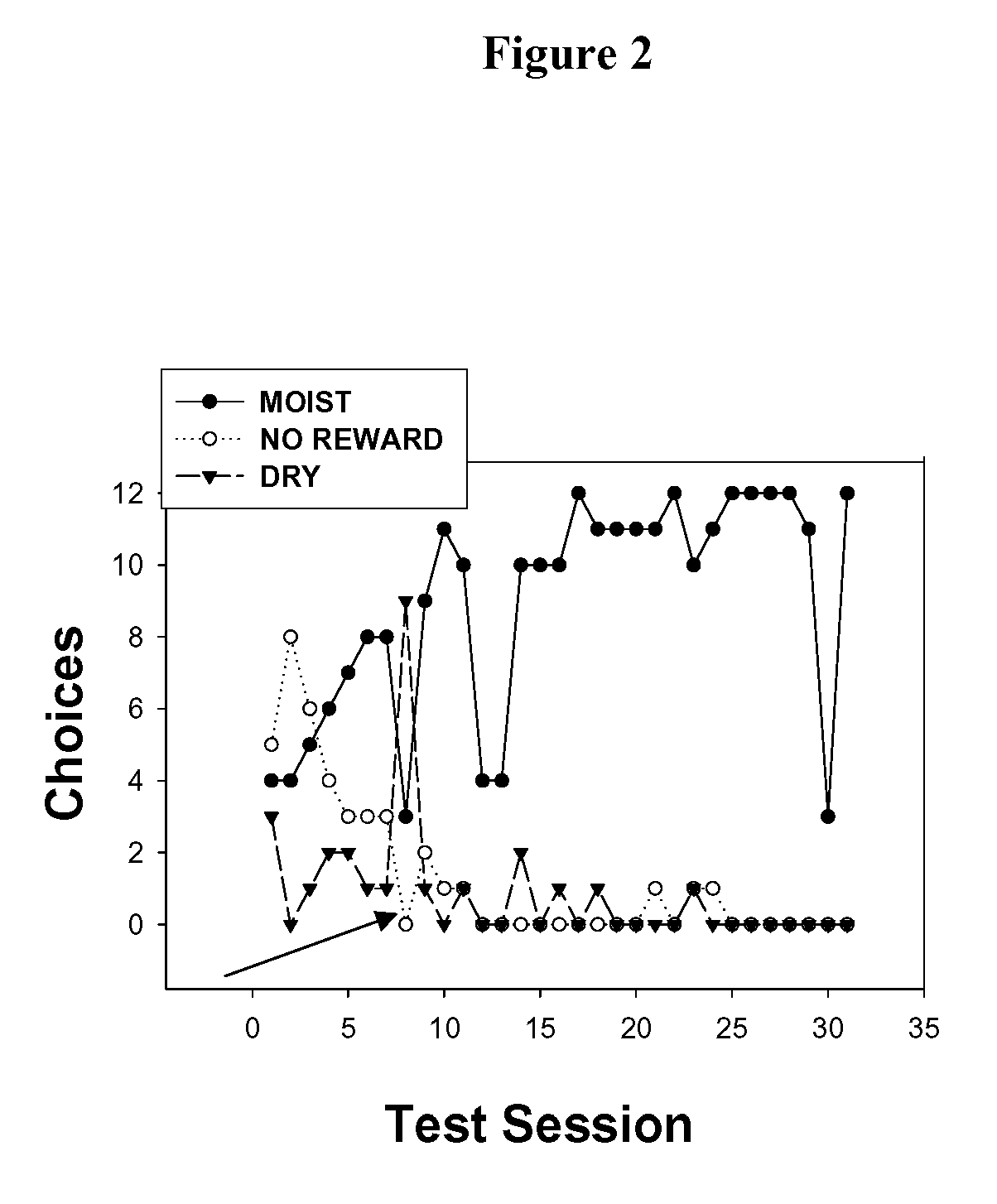Method for assessing food palatability and preference in animals using a cognitive palatability assessment protocol
a cognitive palatability and animal technology, applied in the field of assessing food palatability and preference in animals using a cognitive palatability assessment protocol, can solve the problems of high variability, inability to control food procedures, and unreliable individual animal data, and achieve the effect of determining palatability or preferen
- Summary
- Abstract
- Description
- Claims
- Application Information
AI Technical Summary
Benefits of technology
Problems solved by technology
Method used
Image
Examples
example 1
[0057] First Phase: preference and association testing The single object preference test is used to determine object preferences. Three different objects were presented to the canines for twelve trials, each associated with approximately one gram of a moist food. The positions of the objects were randomized among the three possible well positions ensuring all possible combinations occurred equally within the twelve trials and the number of responses to each object was recorded. The object chosen most often was considered to be the canine's preferred object. In all subsequent testing, the preferred object was associated with non-reward.
[0058] Two association sessions followed the preference test. The purpose of the association sessions was to familiarize each canine with the particular objects and the test food associated with it. Each association session was performed on a separate day. On the first association day, each canine received 12 trials in which one of the non-preferred o...
example 2
[0071] First Phase: preference and association testing The preference test was used to determine object preferences. Three different objects were presented to the canines for twelve trials, each associated with approximately one gram of Hill's P / D diet. The positions of the objects were randomized among the three possible well positions ensuring all possible combinations occurred equally within the twelve trials and the number of responses to each object was recorded. The object chosen most often was considered to be the canine's preferred object. In the subsequent discrimination phase, the preferred object was associated with no reward.
[0072] Two association sessions followed the preference test. The purpose of the association sessions was to familiarize each canine with the particular objects and the test food associated with it. On the first association session, each canine received 12 trials in which one of the non-preferred objects was presented over the middle well containing...
PUM
 Login to View More
Login to View More Abstract
Description
Claims
Application Information
 Login to View More
Login to View More - R&D
- Intellectual Property
- Life Sciences
- Materials
- Tech Scout
- Unparalleled Data Quality
- Higher Quality Content
- 60% Fewer Hallucinations
Browse by: Latest US Patents, China's latest patents, Technical Efficacy Thesaurus, Application Domain, Technology Topic, Popular Technical Reports.
© 2025 PatSnap. All rights reserved.Legal|Privacy policy|Modern Slavery Act Transparency Statement|Sitemap|About US| Contact US: help@patsnap.com



